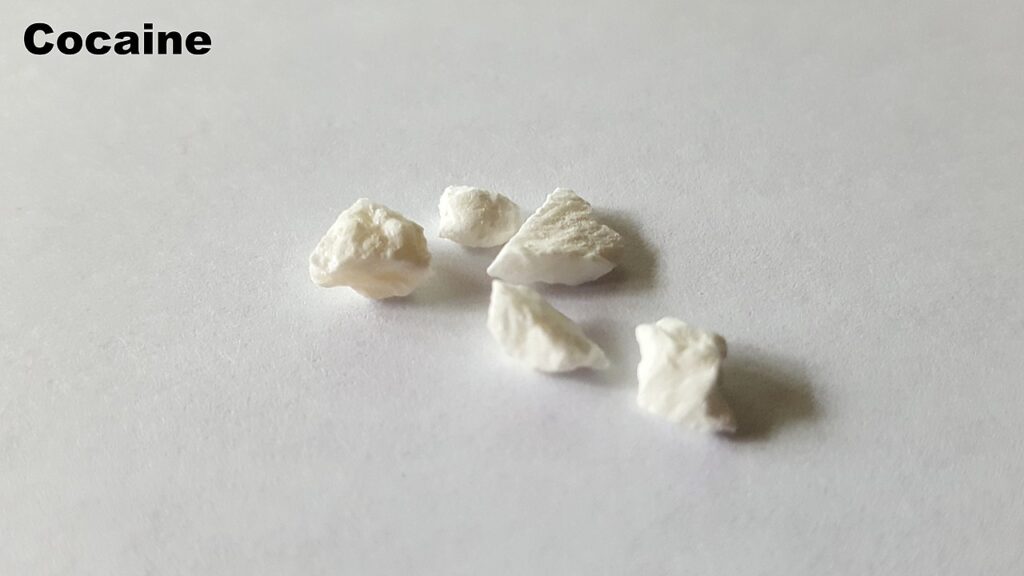In 2021, a staggering 2.5 million individuals, or roughly 0.9% of people aged 12 or older, admitted to using methamphetamine in the past year. This alarming figure underscores the pervasive grip of meth on our society. Dive deeper into this article to unravel the complexities of meth addiction and the pathways to recovery.
What is Methamphetamine?
Methamphetamine is a powerful central nervous system stimulant derived from amphetamine. Unlike amphetamine, which is used in medical treatments, meth has a much stronger effect on the central nervous system.
- Appearance: Meth often appears as a white, odorless, bitter-tasting crystalline powder, but it can also manifest in other forms, each with distinct characteristics. It can be ingested orally, snorted, smoked, or injected. Understanding what meth looks like is essential for awareness and safety, highlighting the importance of familiarizing oneself with the visual differences.
- Street Names: Commonly known as “crystal,” “crystal meth,” “ice,” or “blue.”
- Effects: Meth use leads to increased activity, decreased appetite, and a heightened sense of pleasure or euphoria.
- How it is used: Meth can be used in multiple ways. It is smoked, injected, snorted and swallowed.
Why is Meth Addictive?
The brain’s chemistry is significantly altered with meth use:
- Dopamine Release: Meth causes an intense surge of dopamine, a neurotransmitter responsible for pleasure and reward. This release is much higher than other pleasurable activities, leading to a strong desire to use again.
- Brain Structure Changes: Chronic use can alter areas of the brain associated with emotion, memory, and reward systems, making it harder to quit.
Signs and Symptoms of Meth Addiction
Identifying meth addiction early can lead to more effective interventions:
- Physical Signs: Rapid weight loss, dental issues, dilated pupils, and skin sores or infections.
- Behavioral Indicators: Increased aggression, secrecy, borrowing money, and neglecting responsibilities.
- Psychological Symptoms: Paranoia, hallucinations, intense mood swings, and obsessive behaviors.
Short-term and Long-term Effects
Meth’s impact is profound and varies based on usage duration:
- Short-term:
- Increased attention and decreased fatigue.
- Increased activity and wakefulness.
- Rapid and irregular heartbeat.
- Long-term:
- Memory loss and cognitive deficits.
- Violent behavior and mood disturbances.
- Severe dental problems.
Meth Detoxification Process
Detox is a challenging but essential step towards recovery:
- Withdrawal Symptoms: These can include fatigue, excessive sleep, increased appetite, and depressive episodes.
- Duration: Meth detox can last anywhere from a week to several weeks, depending on usage patterns.
- Medical Supervision: Due to potential complications, detox should be conducted under medical guidance.
Meth Treatment Modalities
Recovery requires a multifaceted approach:
- Behavioral Therapies: Techniques like Cognitive Behavioral Therapy (CBT) and Contingency Management offer structured ways to address addiction.
- Counseling: Sessions focus on understanding the root of addiction, repairing relationships, and building a drug-free future.
- Medications: While no drug is specifically approved for meth addiction, some can help manage withdrawal symptoms or co-occurring mental health disorders.
Inpatient vs. Outpatient Treatment for Meth
Both settings offer unique benefits:
Inpatient Rehab for Meth:
- Provides a structured, drug-free environment.
- Offers intensive daily therapies and medical supervision.
Outpatient Rehab for Meth:
- Suitable for those with work or family commitments.
- Offers flexibility with scheduled sessions throughout the week.
Co-occurring Disorders for Meth
Addressing only the addiction is often insufficient:
- Dual Diagnosis: Many meth users suffer from disorders like depression, anxiety, or PTSD.
- Integrated Treatment: Programs that treat both the addiction and the mental health disorder simultaneously have shown higher success rates.
Relapse Prevention
Maintaining sobriety is an ongoing effort:
- Understanding Triggers: Recognizing situations or emotions that might drive one to use is crucial.
- Building Coping Mechanisms: Techniques can range from deep breathing exercises to engaging in hobbies.
- Ongoing Support: Regular therapy sessions, support groups, and a strong sober network can significantly reduce relapse chances.






